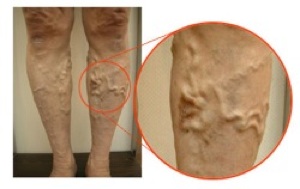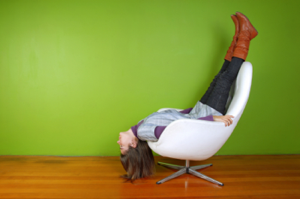|
Have you developed varicose veins during your pregnancy? I had the distinct privilege of getting these unsightly veins on my leg when I got pregnant. Mine were hereditary. Both my mom and nan had them. I don't know why I ever thought they'd skip me! None of my sisters inherited them when they were pregnant. Lucky them! I did go and see a specialist about the beginnings of the veins but unfortunately he was unable to do anything to help me as I had just found out I was pregnant with our first baby. Perfect timing!! He told me to wait until I was done having kids before I try and get rid of my varicose veins. This was not the answer I was looking for however, at the time he was right. Did you know that...
I should tell you that I had veins that looked like they had the "potential" to become varicose veins back when I was 19 or so. It wasn't until my pregnancy that those veins flared up and became full fledged varicose veins. After my pregnancy they did diminish in size significantly. In fact, specialists do say that most varicose veins that are caused during pregnancy usually improve within 3-12 months following the delivery of your baby. What Causes Varicose Veins?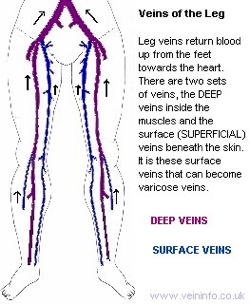
Varicose veins are minor veins with weak walls. They are near the skin's surface, and have damaged valves which do not function properly when bringing the unoxygenated blood back to the heart. The result is that you get a 'pooling' of blood in the veins. These veins then swell and stick out slightly. The less a person moves (standing long in one place, not exercising) the more the blood pools causing bigger veins to develop.
There are a few things you can do ...
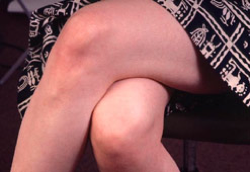
(I don't recommend this exact positioning...but you get the idea! ha ha) Support hose are a great way to do that. You can get prescription hoses from your doctor's office or at a local pharmacy. If you want to opt for the less expensive route, as i did, go for a tensor bandage. The tensor bandage is great if you are pregnant during the summer time. It was hot enough having a tensor bandage around my calf, but to have to wear a support hose during the heat of the summer would have been torturous. Ultimately, do whatever will be best for you and your legs. Treating your varicose veins while pregnant is necessary if you want to prevent the permanent stretching of your skin. Your varicose veins will remain with you until you should decide to treat them. Though they are hereditary, remember they are treatable. It is highly recommended that you wait until you are done having kids. They do have a tendency to flare up during each of your pregnancies.
Treating Varicose Veins: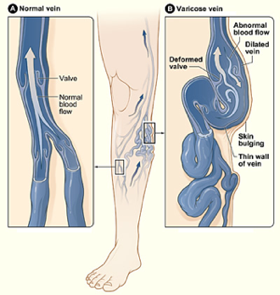
VNUS Closure: The latest, VNUS Closure (also known as “Closure Fast”) uses radiofrequency energy to close and eliminate varicose veins. Doctors place a tiny catheter into the troubled vein, which delivers heat (via radio waves) and causes the vein to shrink, and eventually close. Blood is then re-routed to healthier veins. VNUS Closure generally takes minutes to complete, is practically painless, and is covered by most health insurance plans. Endovenus Laser Treatment (small to medium veins): Another option, called Endovenus Laser Treatment (EVLT), uses a laser instead of heated radio waves to shrink and close down varicose veins.Does it hurt? A bit. If you’re a complete wuss when it comes to pain, ask the doctor to apply a topical numbing agent first. Does it eliminate varicose veins? Yes. Approved in 1999 by the FDA (Food & Drug Administration) doctors feel that this treatment will eventually become the standard in treating varicose and spider veins. How much does it cost? Between $300 to $450 per session. Electrodesiccation :This treatment may leave scars.Does it hurt? A bit. You will feel a mild tingling sensation. Does it eliminate varicose veins? Most experts agree that electrodesiccation is more effective when used to treat the face rather than the legs, although the technique may be used for both. How much does it cost? Between $150 (for the face) and $400 (for the legs) per session. Sclerotherapy: And then there is also sclerotherapy, or the injection of a chemical solution around the vein to shrink it.The solution, in turn, causes the vein’s walls to swell up, then stick together and seal shut. Does it hurt? No. Does it eliminate varicose veins? Yes. Although you made need to be treated more than once, the American Academy of Dermatology states that up to 90% of patients can expect to see a dramatic improvement.How much does it cost? Between $100 and $400 (US) per session.The vein fades in a few weeks, it does not require anaeshetic and is done in the doctors office. Expect some bruising, stinging and cramp sensations during the procedure, with temporary redness. Sometimes a darkened line can form around treated veins and this can take a few months to be absorbed. If there is a swelling in one of the veins that was treated, this can be drained at the follow up consultation. All three methods are far less invasive procedures than vein stripping, which involves the removal of the troubled vein through surgery.Surgical Ligation & Stripping (large veins)Yes, this is surgery. Veins are tied shut and removed from the leg. Does it hurt? No, you’ll be under a general anesthetic. Does it eliminate varicose veins? Yes, patients who’ve had the surgery reported a 90% decrease in spider and varicose veins. How much does it cost? About $700 per session. To go to the pregnancy and baby boutique home page click here.
|





